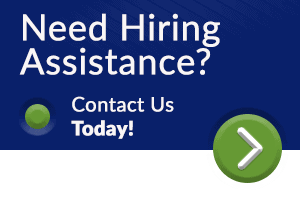Diversity Hiring: Addressing Organizational Practices and Unconscious Bias

Diversity Hiring: Addressing Organizational Practices and Unconscious Bias
By Nancy LaPerla On June 29, 2021 · In Hiring Advice
Updated: June 28, 2023
This year, many organizations have amplified their commitment to improving their diversity hiring and recruiting efforts. Notably, Fortune Magazine’s announcement to “make corporate diversity disclosure the new standard of doing business.” Businesses realize that diversity and inclusion (D&I) in hiring is no longer just an act of sound ethics but that employees favor diverse organizations. Employers experience higher profit from diverse leadership teams. A culture of inclusivity is important, yet it remains an issue for many.
Read on for more information on the status of diversity hiring and how to make your workplace more diverse and inclusive.
What is Diversity Hiring?
Diversity hiring is “hiring based on merit with special care taken to ensure procedures have reduced biases related to a candidate’s age, race, gender, religion, sexual orientation, and other personal characteristics that are unrelated to their job performance.” Diversity is inherently broad and goes beyond race or gender. Moreover, diversity recruiting is a process that values merit and offers fair assessment of all candidates.
There are many different types of diversity in the workplace, including:
- Internal
- External
- Organizational
- World View
Firstly, internal diversities include race, age, ethnicity, cultural diversity, and/or national origin. Secondly, external diversities are characters related to a person. The difference is that they can be changed or modified by the person. These include education, skills, religion, geographical location, relationship status, socioeconomic status, experiences, and citizenship. Thirdly, organizational diversities are the factors that can occur in any workplace, meaning a candidate’s work location, job function, management status, or level of seniority. Lastly, worldview diversities are opinions or views of a particular candidate. These encompass political beliefs or knowledge of history and/or cultural events. Diversity comes in many forms and, therefore, should be considered throughout the recruiting process. Diversity hiring provides an equal opportunity for all candidates. The phrase “equal opportunity” is one you may have seen before in job descriptions or on an organization’s website, however, its implementation remains an issue for many.
How are Companies Addressing the Issue?
Although significantly better than in the past, diversity hiring still faces issues among many US companies. Organizations realize that D&I is good for society, employees, and business. Today, many organizations are showing great strides in diversity hiring and paving a new path for others to follow. For example, Invitae, a biotech and pharmaceuticals company, has developed initiatives that support community and allyship. This involves creating several employee resource groups for employees to come together and discuss relevant societal issues. Some of Invitae’s employee resource groups include Woman in Tech, Latinx, Pride, Black Genetics, Veterans in Genetics, Aznpac & Friends (Asian and Pacific Islander), and Peer Soul Support for mental health and wellness.
Another company addressing the issue of D&I is Salesforce. As a company, they believe that business can serve as a powerful platform for change. For instance, they recently launched their Racial Equality and Justice Task Force led by their Equality, Recruiting, Philanthropy, Procurement, and Government Affairs teams. They created this task force to inform how to best drive racial equality in the workplace and community.
Asana is another company driving initiatives to enforce a diverse workplace. This organization aims to create an empowering and welcoming workplace culture for both current and future employees. In addition, they firmly believe that a diverse and inclusive company is not only great for their employees but contributes to greater business success as well. Asana has a strategy for developing a D&I company, celebrating individual identities, acting against racism, and creating an inclusive workplace environment. For instance, they have created accessibility products to include colorblind, showing their commitment to inclusivity and allowing all employees to achieve their best results.
What Can Your Organization Do?
Promoting diversity in the workplace is essential and ramping up your recruiting efforts is one of the best ways to improve company culture. There are many ways to promote diversity in your organization’s hiring:
Set Diversity Hiring Goals
A diverse workplace promotes inclusivity. Develop an actionable plan and achievable goals. Setting diverse hiring goals helps make the process easier to navigate, establish your organization’s shortcomings, and identify critical patterns in your hiring.
Offer Diversity, Inclusion, and Bias Training for Everyone.
Education is key. Unconscious bias is an issue in the workforce, which we’ll dive a little deeper into later on. Establish D&I and bias training for employees in leadership positions to help raise awareness of unconscious attitudes.
Use AI in Your Hiring Process.
Artificial intelligence is making its way into many organizations and is now used in diversity recruiting and hiring initiatives. For instance, AI is used to screen resumes without unconscious bias, ultimately delivering a smoother diversity hiring process.
Deploy a New Employee Referral Program
Rework your employee referral program to embrace diversity hiring. To achieve your diversity hiring goals, your organization can ask for diverse referrals.
Rework your Job Descriptions
There are many ways to rework job descriptions to promote inclusivity. For instance, use gender-neutral language, and include a Diversity, Equity, and Inclusion (DEI) statement. Make sure your job ads are reaching a diverse candidate pool. It’s important to know and understand the audiences that see your job postings.
Replace “Culture Fit” with “Culture Add”
The “Culture Fit” approach is limiting, prohibiting a company from welcoming new and diverse talent. On the other hand, “Culture Add” promotes diversity by embracing talent that adds to your organization’s culture.
Regulate Your Screening and Interview Process
Unconscious bias occurs first in the screening and interview process. You can avoid this by utilizing a pre-assessment test that provides equal opportunity for all candidates. For example, use a “blind hiring” tool that conceals the candidate’s personal information, such as photos, and create a diverse panel of interviewers and focus interview questions on skillset.
How are Organizations Addressing Unconscious Bias?
Unconscious bias is an issue that essentially prevents diverse hiring. Unconscious biases are learned stereotypes that are automatic, unintentional, and deeply engrained within our beliefs, universal, and can affect our behavior. Many different types of bias occur in the hiring process, and luckily there are ways to eliminate them. One of the first steps organizations can take to eliminate unconscious bias is implementing Awareness Training. This training allows employees to recognize that everyone possesses bias and helps to identify their own. In addition, Harvard has released the Implicit Association Test to help people identify their biases.
Secondly, when hiring for diversity, organizations should focus on the individual rather than characteristics of their ethnicity, gender, or class background. In other words, focusing on the evidence and skillsets in front of you allows you to put aside biases during the recruiting process. Lastly, you can broaden your viewpoint and educate others. Improving your understanding of your unconscious biases will enable you to change how you engage with diversity issues.
In conclusion, diversity hiring is something many organizations are striving for and, in many cases, mandated to improve. It begins with establishing new hiring goals, specific diversity recruiting initiatives and becoming aware of unconscious biases in the workplace. Struggling to implement and recruit for your diversity hiring initiatives? Give us a call. We’ve conducted many senior- and mid-level diversity hiring requirements and are happy to help.
About Benchmark IT –Technology Talent
Benchmark IT offers technology consulting, executive search, and direct hire recruitment and staffing services. We service a wide range of clients and industries throughout the metro New York area and beyond. Our proprietary recruitment process, and dedication to precision, ethics, and personalized service sets us apart from other recruiting firms. As a result, Benchmark IT has become a trusted partner among Fortune-ranked companies, mid-market, start-up, and growth-phase firms since 2007. For additional information, visit: www.bmarkits.com.
TAGGED WITH → Hiring Advice

